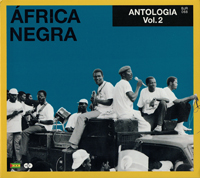
CONJUNTO AFRICA NEGRA
ANTOLOGIA VOL 2 (Bongo Joe BJR068)
Though not well-known outside their homeland of São Tomé e Principe, until about a decade ago when they began to tour Europe, Africa Negra are one of the consistently great African bands. The band emerged at the same time as the independence movement, prompted by a revolution back in Portugal in 1974, followed by São Tomense independence a year later. Portugal had colonies longer than any other European nation, and in fact started the trans-Atlantic slave trade in the 15th Century!@ After fighting in the Angolan war of liberation, "General" João Seria moved to the island and joined Sangazuza, another legendary band, as second vocal, but was quickly recruited by Africa Negra in 1977. Their song "Bo lega caço modebo (You let the dog bite you)" denouncing the country's lack of democracy, was not only a domestic hit, but was featured on the global best-selling compilation Telling Stories to the Sea (Luaka Bop, 1995). Africa Negra would record at the national radio station, and because the band was so large, they'd play outside in the courtyard, surrounded by fans. A first album Aninha appeared in 1981 to great acclaim. Then in 1983 three albums appeared: Alice, Angelica and Carambola, all of them solid gold. In 1989 they toured Africa and relocated to Cabo Verde for a while, due to their immense popularity in the fellow Lusophone nation (though one with a different dialect). The locals loved their Puxa rhythms. Four more albums appeared in 1990 and 1991, after which their productions only appeared on cassette. I am assuming economic constraints were behind this shift, and the fact they began to pool band-members with Sangazuza. Their Lisbon label changed hands and though some cassettes still appeared, they were notoriously difficult to find, unless you went there and asked around. The band naturally ran out of steam, and took a hiatus from 1999 to 2012. This sequel to Antologia vol 1 is really interesting because it contains mostly unreleased material which, nevertheless, is as good as anything they released. Volume 1 covered their hits and the best tracks from their main albums. Volume 2 goes back to a 1979 session for four songs in the "puxa" style, plus a ballad. These are followed by two tracks from a rare cassette. A 1990 recording with Sergio Fonseca singing lead provides the next five songs, recorded after João Seria moved to Cabo Verde. The lilting interlocking guitars of Emidio Pontes and Leonildo Barros provide the dreamy beachscape while the determined Flay flails on the drums and Vasco Gama (no less) holds down the bottom on a thick bass. Leader and vocalist João Seria returned in 2014 and in 2022 took the band to Colombia for a historic visit. Seria died in May 2023 after fronting the band on and off, for 45 years. There is an element of soukous in the intertwining guitars, but curiously the horn section sounds more like the musical heritage of Guinée. This is a phenomenal release, well curated.
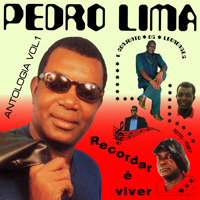
PEDRO LIMA
RECORDAR E VIVER: ANTOLOGIA VOL 1 (Bongo Joe)
Earlier this year Pedro Lima's Maguidala was reissued by Bongo Joe, and so it is a thrill to find more from this São Tomense artist who died in 2019. The sound of São Tomé is a sweet hybrid of Angolan semba and neighboring Congolese cavacha rhythms (both countries were part of the original Kingdom of Kongo before Europeans arrived), with sweet harmony vocals and intertwining guitars and complex puxa percussion from drum set, reco-reco and congas. This galloping rhythm will be familiar from the other great bands from those island, such as Sangazuza and Africa Negra. Formed in the 1970s, Os Leonenses made their first recording in Gabon in 1981. Their second album Maguidala came out in 1985, followed by a new disc every two years or so (on obscure labels). They often visited Luanda, Angola to record and once played for a crowd of 40,000 there. This compilation draws from 45s and also gathers unreleased material to fatten the offering. It's all first rate: the band are very assured and maintain their intensity with the occasional bridge where they take it down to to bass and percussion while the guitars fall back to the mi-solo (as in 70s Congolese and some Kenyan music) before returning for a "B-side" jam. Until the release of Maguidala we only had three songs on the Bongo Joe compilation Léve Léve, which also includes details of Lima's life and especially his outspoken leftist politics which found their way into his song lyrics. This is a rich compendium of some everlasting music from the small island with a big voice.
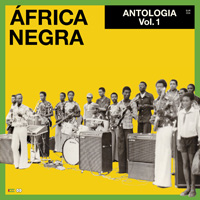
AFRICA NEGRA
ANTOLOGIA VOL 1 (Bongo Joe BJR056)
Being a fanatic collector of all things to do with the Sao Tomense band, Africa Negra, I have around nine of the dozen tracks on here on the original albums (I say "around" since one is a crappy cassette). I am looking forward to its April 1 release because ever since I first heard them, I have tried to find everything by them. From hard-driving numbers with a galloping air to languid ballads, everything about their sound enthralls me. Like Super Mama Djombo and a few other Lusophone bands, their minor key melodies and sometimes off-kilter guitar and percussion riffs get under your skin. I'm not sure but it may have been the song "Bo lega caco modebo (You let the dog bite you)" which I heard on the compilation Telling Stories to the Sea that drew me in. Through diligent searching I have found 15 albums by them: not always easy since their music is normally released in Portugal and for some reason it's nigh impossible to get CDs or LPs from there, short of going to Lisbon. And what of this compilation? Well, there's already a "Best of" series and an "Os Melhores," and it's not hard to go to each of their albums and cherry pick one or two brilliant tracks, as is the case here. They were formed in 1974 with lead singer João Seria and released their first album Aninha in 1981. From there we get the lead track "Vence Vitória" and what I assume is a political number "12 de Julho." We hear the title cut of 1983's Carambola, and another track from that album, "Epô Sá Cata Pabô Manda Mum," where we hear the breakdown to mi-solo and percussion characteristic of Congolese cavacha which they absorbed into their sound, mastering that essential break to show the inner workings of the band's guitars. The Cavacha breakdown is justly celebrated as far away as Colombian sound systems and it'a great to hear it in the context of this West African island music. There are also nice "roars" from Pacheco on bass. Meanwhile, from East African artists like Remmy Ongala they picked up the sound of the Boss Flanger which kicks in on "Pie can" which was on Que Colo de Anzu, which came out in the US in 2012, when the band was reformed. When it kicks into seben overdrive they shout out "bouger (move)," "niekese" and "danser, danser" which, obviously, are not Portuguese. The two guitars are scorching against the reco-reco percussion. The pure crisp guitar sound of Emidio Portes on their 1983 album Alice is showcased on two tracks, "Quá naboa negafa" by rhythm guitarist Leonildo Barros and "Cumamo bivalemo." And many of the tracks stretch from six and a half to ten minutes. Their blend of music is described as the local Puxa rhythm added to Congolese rumba. The last cut, "Giná Mé Mú Môlé" (from Madalena meu Amor, 1996), adds wonky horns and a different singer, unless my copy has been affected by all the times it was re-copied and changed hands. According to the liner notes, they moved to cassettes in the 1990s until their reformation in 2012 since when they have put out three CDs. Their albums were recorded at the radio station which had the only studio on the island. The studio space was so small the band recorded outside "in the courtyard, facing the ocean and in front of their fans." Apart from getting better sounding versions of a couple of songs, I look forward to the ones I have not heard and also the sequel which promises to be a volume of unreleased material.
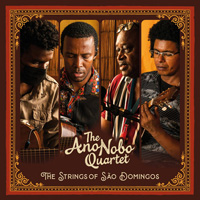
ANO NOBO QUARTET
THE STRINGS OF SAO DOMINGO (Ostinato Acoustics)
This is a quartet of virtuoso string players, on guitars and cavaquinho, playing the music of Ano Nobo (1933–2004), a legendary Cabo Verdean composer whose real name was Fulgêncio da Circuncisão Lopes Tavares (that is one holy name, and WHO calls their kid Glowing Circumcision? No wonder her changed it to Ano Nobo). The album is by turns brisk and mellow, sometimes verging on mournful in the vocals, in the style known as Coladeira (popularized by Cesaria Evora), and containing elements of samba, salsa, flamenco, even reggae and Moçambiquan marrabenta. The repertoire is great, the music is fine, my only problem is the vocalist is struggling to hit the high notes and obviously they should have pitched the songs in a lower key so he wouldn't sound strangulated. I am also painfully reminded of the times I got up in public, once at a friend's wedding, and called for the band to play "Johnny Too Bad" in D, something white boys shouldn't do without at least a run-through first. That aside, the guitars are wizard and the cavaquinho rides along brilliantly, even riffing when the others drop out, maintaining the rhythm. It's this strident stringular interplay that keeps it exciting. "Pascal's baixo" shows off the leader's skill on bass runs, in fact it's an attempt at an Ernesto Lecuona piece he is half-remembering! (Or am I half-remembering a piece by Albéniz?) In keeping with the live recording there are ambient sounds, chatter between the musicians, birds, street sounds and ocean noises, which are really exciting if you have been shut in for two years. Fortunately the strangled vocals are only intermittent, on a couple of cuts, otherwise there is some truly lovely jamming heard here.
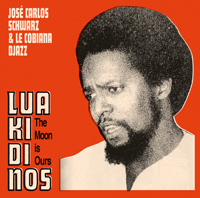
JOSE CARLOS SCHWARZ & LE COBIANA DJAZZ
LUA KI DI NOS (Hot Mule)
"The Moon is Ours" is the English translation of the title and yes, dream big, folks and your dreams may come true. This is the cream of two records Schwarz made with Cobiana Djazz in the mid-1970s. They are both imbued with that dreamy Guinean lilt: washes of sound from electric guitars and punchy horns and heartfelt vocals. Schwarz was of mixed parentage, Cabo Verdean and German ancestry, with Guinea-Bissau as his place of birth. He studied in Dakar and Lisbon and took up poetry and music against his father's wishes. In the 60s he liked Brasilian Bossa Nova and American soul & jazz music, but was also drawn to the political struggle for independence from Portugal in his homeland. He turned inward to indigenous melodies and began writing in Guinean creole and, around 1970, got together with Aliu Bari and Mamadou Ba to form Cobiana Djazz. Their style of music, which had mostly been underground until that point, was met with overwhelming public acclaim. Their roots revival music was also seen as a weapon of resistance as they recorded in secret and smuggled tapes to the radio. However the group members were arrested in connection with a bombing in 1972 and spent two years in prison. Once independence was attained, following a Socialist revolution in Portugal, Schwarz was not only freed but appointed Minister of Arts and Culture in charge of youth policies. But ever the poet and revolutionary, he became an embarrassment to the government, so they posted him to Cuba under the pretense of setting up diplomatic relations. Tragically his plane crashed on landing in Havana killing all passengers. Schwarz was 27. If you love Lusophone rock from the 70s, such as Super Mama Djombo or Zé Manel, you will adore this. Two songs by Schwarz (not included here) appeared on the crucial Memorias de Africa compilation from Farolmusica in 2008. This disc (which sells for 150 euros on discogs) and the sequel, vol 2, appeared from SonAfric in 1978; the same year a recording he made with Miriam Makeba was released as "Djiu di Galinha." Scanning the track lists compared to discogs there appear to be five songs from volume one (half of that album) and six of the eight on volume two here. Unless they've changed the titles drastically (the old "Amigos Cabali" has become "Amigus ka bali," etc), it would seem there are at least seven more yet to reappear.
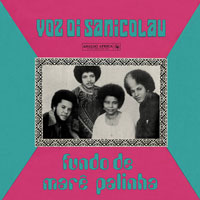
VOZ DE SANICOLAU
FUNDO DI MARE PALINHA (Analog Africa AADE012)
A limited edition 10-inch dance party disc from Analog Africa knocks it right out of the park. OK it was recorded in 1976 but it's new to me, and you too, I will bet, and is relentlessly upbeat and swinging as it bursts with metal guiro-driven coladeira grooves. The septet's home is the island of São Nicolau, and St Nick is the patron saint of Christmas, of course, so give yourself an early xmas present and grab this. It was recorded in Rotterdam in a few days and has an urgent live feeling. There's a trebly electric guitar and sustained electric organ, like the mighty ocean washing in and out. The drums, snare and ride cymbal, are low key. Despite the obvious superb quality of the disc it vanished into obscurity and the band returned home and the everyday reality of making a living, giving up on their musical ambitions. The leader and guitarist, Tô-Zé, was actually in Rotterdam as a sailor, as it is a large seaport and home to many expatriate Cabo Verdeans. The lady singer was a relation who lived there and was cleaning houses. He knew she was a fine singer and invited her to join them. They rehearsed for two months, in a perfunctory manner as most of them were trying to make ends meet, and then after recording six tunes at the session, the disc was pressed in an edition of 1000 copies. Joana do Rosario, who became known as "Juaninha das Mornas" became the first woman from Cabo Verde to cut an album. My only complaint is it is too short, but it is what it is. The ballad "Ribera prata" sung in lovelorn fashion by Tô-Zé includes cavaquinho. It is a jewel of a disc and much praise to Samy ben Redjeb for unearthing it again.
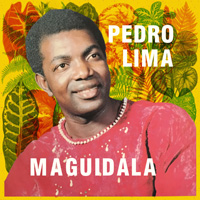
PEDRO LIMA & OS LEONENSES
MAGUIDALA (Bongo Joe)
I don't know if it's creeping senescence or whether I am fortunate to be on the receiving end of some great old music at this point where I find reissues more compelling than new releases. I do check out the new stuff, and find Bandcamp's recommendations most useful, but as my old sidekick DeeJay IJ said to me recently: We used to be the trendsetters, no one told us what to listen to! Now, we are looking for stuff like everyone else. This uptempo music from Sao Tomé was called ouxa, and in 1985 when this album was first released, Pedro Lima was the king of the islands. His band also incorporated the rumba-soukous hybrid pioneered in West Africa by the African All-Stars, guitarists like Lokassa Ya Mbongo, Dizzy Mandjeku, Syran Mbenza and Dally Kimoko. Being a Portuguese ex-colony there are also elements of other Lusophone musics, like the rebita beats of Angola. In fact the Leonenses often made trips to Luanda to perform and record. The tracks stretch out and are quite simple, relying on the propulsive percussion on the reco-reco to keep afloat while the wiry rhythm guitar of Pety-Zorro twists and turns. This is great music and welcome as an ocean breeze on a hot day.
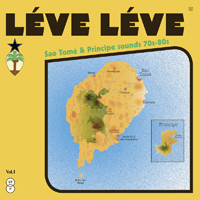
LEVE LEVE
SAO TOME & PRINCIPE SOUNDS 70S-80S vol 1 (Bongo Joe)
I jump on anything from Sao Tomé and Principe, tiny islands in the Atlantic off the coast of Gabon, which were colonized by Portugal. You have probably heard of Africa Negra, but there are many other wonderful bands from these islands, including Sangazuza, Os Untuès, Pedro Lima and Conjunto Mindelo. They are all here in this great, clear compilation. The title means "Take it easy," and sums up the attitude of the islanders whose music has echoes of Brasil, Angola and Cabo Verde, all of which share a language and colonial history. Slaves were brought there to work cocoa plantations and their rhythms and songs became mixed in with European popular music and echoes from other Lusophone countries. This album collects singles from 1978-89, assembled by a French DJ called Tom B who went there crate digging and to track down artists. The Africa Negra & Sangazuza tracks have all been collected on CD before now (including the smash hit "Aninha"); that leaves 11 tracks that are new to me and a welcome hour of warmth from the chocolate isles. Conjunto Equador are a pleasant surprise: familiar sound but with a sparkling lead guitar. In my original review I said Pedro Lima deserves his own reissue, and sure enough Bongo Joe followed up with exactly that.
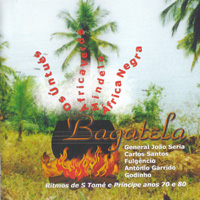
BAGATELA
RITMOS DE SAO TOME E PRINCIPE ANOS 70 e 80 (Sons D'Africa CD00603.2)
Music publishing has always been flexible and fluid. Companies go broke and their catalogs go into limbo or are repackaged and reissued. Quite often albums are released with little or no information, let alone a date of publication (to keep it fresh-seeming) so it's hard to tell when I find a new release if it is actually an old one, but if it's new to me, I will consider it. Among all the stuff I wade through, looking for good music, I can count on reissues of classic African music. The Lusophone bands of Africa, such as Super Mama Djombo, Sangazuza and Africa Negra, are among my favorites and I am always looking to sophisticate my collection. My Friend Ken A. alerted me to some reissues. There's scant info: this one came out in 2018, according to Qobuz but I got it a decade ago. Africa Verde have one album listed on discogs that came out in 1990 and two excellent cuts from it are included. Their name and sound suggests they are related to Africa Negra. The Conjunto Mindelo (whose songs are overmodulated and probably taken from a cassette), join Verde, Os Untúes and Africa Negra with the lion's share of selections. Mindelo's music is folk-based with scraper percussion and drums and heavy guitars, but the sound is so harsh you probably will want to skip it and focus instead on the other tracks. Os Untúes, I think, are based in Lisbon, performing urban tunes in the styles of rumba, Ouxa and Socopé, which apparently are older slow ballroom dances. If you like Cabo Verdean morna music, this is for you. They have two EPs listed on discogs and 8 tracks on the companion volume to this release SOCOPE/RAIZ DE NOS (Sons d'Africa CD00602.2). Their keyboard-driven ballads are echoey guitars are again very much in the style of Africa Negra. The latter close the set with three songs which are not collected on any of their albums, as far as I know, and are gems. In short, half this album is well worth hearing.
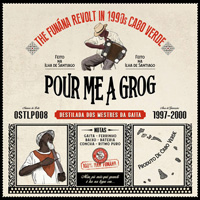
POUR ME A GROG
THE FUNANA REVOLUTION IN 1990s CABO VERDE (Ostinato)
Funaná is one of those instantly recognizable world musics, like Bachata from the Dominican Republic, which makes you jump about, shake your belly and wiggle your elbows while laughing. Especially after some grog, or rum and water. (Old Grog was a British admiral in the West Indies who kept his men going on rations of diluted rum.) The music was underground for about 20 years until Cabo Verde found independence from Portugal, following the Carnation Revolution which led the mother country to democracy, in the mid-70s. Funaná soon became a mainstream popular sound, featuring wheezy out of breath galloping button accordéon and percussion with a noticeable metallic scraper sound, like someone sharpening a cheese grater. Ferro Gaita is the most famous exponent, and also the name of the metal scraper (ferro), and they lead off this bursting at the seams compilation where button accordéon (gaita) is elevated to rock status, fronting bass and trap drums. Its adoption was necessitated by the lack of electricity on the islands. The title cut "Pom un grogu," by Peps Love (Product placement: I guess they don't do rum 'n coke there) is typical: energetic two-chord romp (A-minor to E-minor?) with out of puff call & response vocal and chorus as if the whole band is pogoing in time to the beat. The musicians were storytellers and related the vicissitudes of daily life in their lyrics. As time progressed funaná bands added drum programming, present here via Orland Pantera, and synthesizers but there was a backlash in the 90s because people preferred the older sound as embodied by the group Ferro Gaita and Bitori. This disc is a full on blast of the great early sound, put together from several sources.
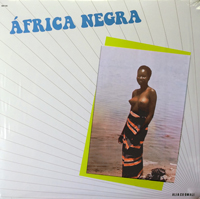
AFRICA NEGRA
ALIA CU OMALI (Mar & Sol MSR003)
This is remarkable. A new album from Africa Negra that sounds like their classic albums of the 80s, so of course I thought it was a reissue since, as far as I knew, they broke up years ago. Even the cover image of a topless native girl seems quaintly retro. The group was established over 40 years ago in São Tomé y Principe, tiny islands off the West Coast of Africa with a population who speak a Portuguese patois. The leader of the band is singer/songwriter "General" João Seria and the original guitarist Dió Vaz is still with the band, now as a percussionist. Their many albums are issued in Portugal but contain no useful information other than song titles and once in a while, personnel (often first names only). The most reliable authority is Matthew LaVoie who went to meet and record them for the Voice of America radio show and blogged about it here. LaVoie explains, "Most of the group's songs use metaphors to sing about mores and social dilemmas," and he expounds some of their most popular lyrics, and supplies sound files also. Back then, in 2009, they were complaining about the rise of DJ culture and the lack of gigs. While their music is spiritually akin to that of Cabo Verde and Angola (where they are huge), it also shares the excitement of Congolese soukous and stretches out with a seben you can dance to. Leonildo Barros, second voice, has also been around since the '90s where he was guitar and keyboard player. Singer and lead guitarist Antonio Menezes also joined up in the 90s, right after Panela. Mainly they start off with a minor key island lilt of the A-minor to E-minor variety, and then the drummer cranks it up to race tempo, followed by a guitar breakdown reminiscent of the African All Stars of yore (I am thinking of Bopol's dry "waka waka" guitar sound heard here on "Fala da cu Beto"). Small and compact they carry a punch with powerful drums, jangling guitars and distinctive voices.
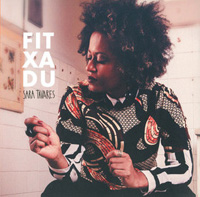
SARA TAVARES
FITXADU (Sony music)
The latest set from the sweet-voiced singer more than fills the void left by Cesaria Evora. Tavares hails from Lisbon and she is of Cabo Verdean ancestry, however her music encompassing Brasilian as well as African rhythms and melodies. She came to prominence through TV talent shows and is a charismatic performer. Her latest album is a pleasant journey and includes a cover, "Ginga," which includes "Suor di no pubis" (I am sure it's not a dirty expression, but hey little boys always snigger at anything with "pubis" in it) and "Dissan na mbera," by Super Mama Djombo of Guinea-Bissau. This is followed by one of the two songs she wrote solo, "Coisas bunitas (Pretty things)," the first single off the album, also featured in a remix at the end. The second single (I know, you've barely had time to hear the first one) is "Brincar de Casamento (Wedding games)," with Toty Sa'Med singing the male part, and suggests to me she has been listening to Lenine and some other avant garde Brasilian composers. There is a decidedly Brasilian mellowness to parts of the album, and looking at her YouTube videos you notice a lot of appreciation from South American fans. The title song features Princezito and is sung in Portuguese creole; his raspy voice adds the Evora component in case you felt it was lacking. The album is light but very well produced; the closing remix grooves without getting too aggressive, which would change the overall tone. But I think someone could really trip it up a bit with more bass and create a dance hit out of it.
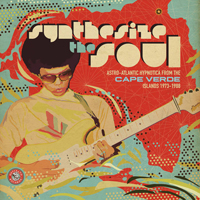
SYNTHESIZE THE SOUL:
ASTRO-ATLANTIC HYPNOTICA FROM THE CAPE VERDE ISLANDS 1973-1988 (Ostinato Records)
I've got good news, and bad news. The good news is the reissue companies have finally run out of Afro-Funk to reissue; the bad news is they have moved on to African disco. The worst whiny synthesizer sounds ever created over a relentless bomp bomp are nothing to take lightly, but don't worry readers, I did the listening for you and can say that you can safely skip this. It's not all vile: "Posse Bronck" by Nho Balta might make the cut on another compilation and not be too repulsive, and even "Lameirao" by Kola has a horn-led charge that is pleasant enough, but the compilers really pulled out the organ stops to find examples of Cabo Verdean music that met the expectations of Euro-disco fans in the 70s and 80s. They didn't have electronic instruments back in the islands, but immigrants to Europe soon found them, especially once the tide of expatriates swelled following independence in 1975. The result is indistinguishable from scores of other feeble attempts to generate some saturday night fever. So, on second thoughts, let's go back to the cold sweat.
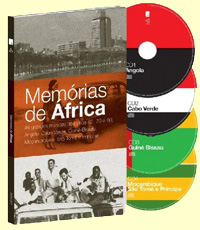
MEMORIAS DE AFRICA
AS GRANDES MUSICAS DOS ANOS 60, 70 E 80. ANGOLA, CABO VERDE, GUINE-BISSAU, MOÇAMBIQUE E SAO TOME E PRINCIPE (Difference 2008 FAROL 85807)
This is an 88-page hardback book with 4 CDs, each devoted to a Lusophone culture in Africa from the 60s through the 1980s. (In case you are wondering, "Lusophone" is when you drop your cellphone down a sewer grate, according to my pal Larry.) This comp is new to me, thanks to fellow DJ David Noyes, who alerted me to it, and since I am always on the quest for this music, specifically, I am thrilled to get hold of a copy. The book is a bit overdone, sort of an extra-illustrated Wikipedia article on each section, with a lot about the geography and climate and not enough about the music. There are personal essays by people connected to the music, including Firmino Pascoal, Angolan musician, Jorge de Jesus Rodrigues, Angolan writer, Virgílio Correia, music promoter in those parts, Juca Delgado, music producer in Guinea Bissau, and Samuel Yana Munguambe, teacher/researcher in Mozambique. As facts about the groups, such as Super Mama Djombo, Cobiana Djazz, Sangazuza, and Africa Negra are hard to come by, it's worth dealing with the "rose bisque"-colored spindly type that carries the english text. What's great is the music, and considering many master tapes were lost in the interim, the sound is excellent. Angola has been well represented by the 5-disc set on Buda Musique and the essential Soul of Angola, a 2-disc set on Lusafrica. There are two duplications from Buda's Angola 70s, which is not much, and it's surprising that Bonga was left off, but two other big names are present: Teta Lando and Carlos Lamartine. That lovelorn "morna" quality from Cabo Verdean music permeated tracks like Teta Lando's "Nizambi" which closes the Angolan disc. There are lots of surprises on here, and they are woven into a tapestry that includes standbys, like Voz de Cabo Verde, who have three entries on the second disc. If you are missing Cesaria Evora, check out the sprightly version of "Sodade" by Marino Silvia which sends her lugubrious rendition packing. Also absent, Bau and Boy Ge Mendes, but it's great to hear a different selection. "O Bernardo" by Ana Firmino is also reminiscent of the late cigar-puffing diva, but has much more joie de vivre and just a twist of saudade. The third disc "Guiné-Bissau" is a sampler of five bands with two or three tracks from each: Super Mama Djombo (taken from their 1978 debut album Na Cambança, including the sublime "Suur di no púbis"), Saba Miniamba, José Carlos Schwarz, N'Kassa Cobra and Zé Manel, the former drummer of Super Mama Djombo. The N'Kassa Cobra tracks are exciting: three come from their 1983 album Unidade luta progresso, and one from their 1982 debut. Not to be missed. The fourth disc features Moçambique along with Sao Tomé & Principe. There's a record skip in the second track, "A uni tenderi" by Conjunto Kwe-Kweti, which should have been taken care of. I guess it adds authenticity. The known factors, Sangazuza, Africa Negra and Os Leonenses are buried in the middle of this set. Preceding them are some folkloric tracks which gradually reveal some latin currents in the guitar rhythms. But when Africa Negra cut loose on "Aninha" you know you have arrived somewhere. Not only is it the standout on this side, it will make you want to immediately start collecting all their discs.
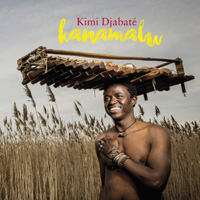
KIMI DJABATE
KANAMALU (Red Orange RED1601)
Kimi Djabata hails from the village of Tabato in Guinea-Bissau, a place known for its griots (His family had come from Mali centuries before and were invited to settle there by the local king who liked what he heard). Kimi is firmly in the tradition while also having a foot in the modern world. He plays (and wears, apparently -- see the cover photo) balafon and is accompanied by kora, guitar, calabash, congas, djembe and electric guitar on his third album. The modernity quotient arrives in the form of blues and latin touches in the solos. Reportedly there are gospel and even fado influences in here too. However the first thing I notice is a soukous guitar permeating the second cut "Anhonté," which is a danceable little number. Nowadays Djabaté seems to be based in Portugal but is keeping alive the traditional music of his homeland (while allowing modernization in terms of pan-African grooves), singing about family, collective effort, unity, and democracy. Joy and suffering are both parts of love, he sings, but let's get rid of envy and pull together. There are some rocking moments in here, like "Kanu" with clipped guitar weaving filigree around the balafon patterns. Kimi D is a living exemplar of a great griot tradition and immediately draws us into his confidence as we sense his being pervading this whole album.
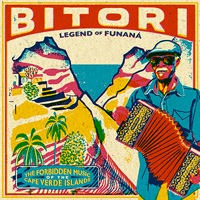
BITORI
LEGEND OF FUNANA (Analog Africa AACD/or/AALP 081)
For small remote islands off the West coast of Africa at the latitude of Senegal, Cabo Verde packs a musical punch far above its fighting weight. Successive currents of great music have come from there over the years. We know of "morna," the bittersweet bluesy form, because it was promoted internationally through the success of Cesária Evora. The line-up invariably included the tiny mandolin-like cavaquinho (which is also popular in Brasil), clarinet, accordion, violin, and sometimes, piano and guitar. "Coladeira" is another indigenous rhythm, more uptempo, which incorporates elements of samba and zouk, as waves of popular music arrive in the islands and are absorbed. The main noticeable difference is the guitar part which uses a thumbed bass note, followed by a chorded strum with the other fingers in a two-part boom-ching beat. These forms were brought to us by Popular African Music on two CDs: Music from São Nicolau (pamap 603) and Conjunto Mané Pchei (pamap 604), recorded in 1980 before synthesizers and electric guitars took over. A third, more engaging form -- Funaná -- came to our attention with the Ferro Gaita album on Harmonia, as well as the Palop Africa! anthology on Earthworks in 1999. The story of this newly reissued album began in the early fifties with a young man, Victor Tavares, known as Bitori, determined to get his hands on an accordeon. And where does someone from a small island in the Atlantic go on such a quest? To another island, this one being the other Portuguese colony of São Tomé, further south. After he mastered the instrument, Bitori launched into the folk music scene playing funaná accompanied by the sound of an iron rod scraped by a kitchen knife. The raw roots music was banned by the authorities and remained underground until independence in 1975. Tavares was approached by a singer, Chandal Graciosa, who suggested if they went to the Netherlands they could record an album. And so the legendary Bitori album first appeared in Holland and immediately swept the duo to fame at home. By then Bitori was 60 years old. Now intrepid musical explorer Samy Ben Redjeb has found the original artists and their album and brought them back to us. To the ferro and gaïta (iron rod and accordeon) they added bass and drums. There's also whistling on one track. It's rocking folk music, not too dissimilar from batchata or zouk, but with a great propulsive urgency to it.
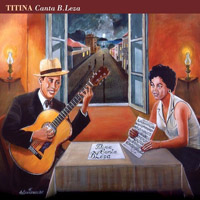
TITINA
CANTA B. LEZA (Astral Music STCD3064)
One unfortunate aspect of "world music" is they way countries get checked off by listeners. They hear Ali Farka Touré (for example) & think that he represents all Malian music; Gilberto Gil? OK, that's Brasil covered, and then Cesaria Evora comes to stand for all Cabo Verdean music. So dozens of equally talented or better artists don't get a fair hearing. Titina was making it well before Evora and here is her landmark 1988 album lovingly restored to audio high-fidelity. "B. Leza" -- obviously a pseudonym meaning "Belleza (beautiful)" -- was allegedly a merchant navy officer who retired to the Cape Verde islands on the Tropic of Cancer, with his guitar and introduced the semi-tone to those islands. From the age of 4, little Titina would be drawn to the sound of his playing. He blended both "morna" and "fado" -- two of the rich musical traditions of the islands (as well as the resident colonist Portuguese culture). And we wonder, what would they be without those diminished sevenths?!! Listening to this reminds me strongly of Bahia, Brasil, and makes me keen to reread Jorge Amado, their great national author, and let my mind wander in those pastel-washed streets. There's cavaquinho, clarinet, even a string trio adding lushness behind Titina's lovely voice. It may seem a little old-fashioned and corny to some ears. Paulino Vieira, who was musical director for Evora, also produced this disc in his youth, as well as playing many instruments (violin, piano, percussion, cavaquinho). Today he is a member of the National Assembly, having hung up his rock 'n roll shoes, but I am sure he juices up the cuica from time to time. So give this a spin. It's dramatic and lyrical, sweet and tart, sugar cane with a dash of lime. Sample here.
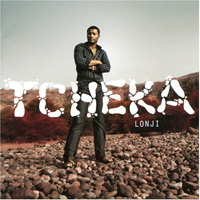
TCHEKA
LONJI (Times Square FQT-CD-09)
Light, summery music from Tcheka. Most pleasant. How come suddenly Cabo Verde is producing the best new crop of musicians in Africa (since Mali)? Tcheka comes on the heels of the divas Lura and Sara Tavares, and with his Portuguese lyrics reminds me of Lenine, the brilliant Brasilian singer-songwriter. I was mightily disappointed when Lenine's summer tour was canceled, so this will have to satisfy me for now. In my review of Tcheka's debut album I said it reminded me of Lenine, and sure and begorrah the mighty one graces this outing with his presence. Even when he is just playing triangle, he is all over it! He also plays second guitar and sings backup vocal. The cuica and caxixi percussion also bring Brasil to mind. Other percussive interludes are provided by rain and telephone book! The title track is really lovely: Tcheka's wistful voice balanced against his acoustic guitar and a susurration of Brasilian percussion makes it fresh. Accordion is brought in for "Tuti Santiagu," along with some stirring snare drumming. Trumpet, trombone and a smattering of effects are also brought to bear on the compositions, without being over-produced. However the projector noise on "Primeru bes kin ba cinema (First kiss at the cinema)" is a bit of an irritation.
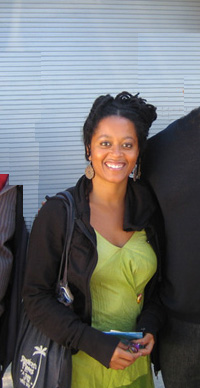
Sara Tavares; Photo by Yoko
SARA TAVARES
LIVE at the Florence Gould Theatre on Sunday 21 October, 2007.
The place was packed and after opening with a few gentle tunes, Tavares kicked back her chair and got on her feet, quickly followed by the crowd who were dancing in the aisles. She turned it over to her guitarist for one number and he was outstanding (No wonder: I learned later it was Boy Ge Mendes!). Tavares is Cape Verdean, born in Lisbon, but completely immersed in her roots. Unlike the traditional morna & coladeira sounds of Cesaria Evora, Tavares puts her own sensibility into the music she writes. Some of her songs are in crioulo but when she sings "Bom feeling" the audience knows and gets into the groove to sing along. Not only was the sound mix perfect, everyone, including her drummer/percussionist (Ndu Carlos) and bass player (Gogui Embalo) got to show off their adroitness. Mendes on electric guitar was an added treat. Afterwards IJ dragged us backstage to meet the band, as his his wont. I prefer to leave, assuming the artists have just given their all for an hour or more and want to unwind, not hear accolades from twerps with a poor grasp of Portuguese. I met Yusuf, owner of her label, and he told me proudly that he only signs artists who can put on a great show. With today's studio technology, he said, anyone can create a perfect-sounding album. It just takes ProTools and hours of work. But he checks out potential signings and if they can do it live, he is interested. I think he has a great discovery in Tavares. Check her website for tour dates. Don't miss her.

TCHEKA
NU MONDA (Times Square FQT-CD1804)
Tcheka is a Cape Verdean guitarist and singer with a strong, individual sound. He has Jesus on his side, but we will let that slide for now. After a brief opening ballad he unleashes some bright rhythms to show off his chops on the acoustic guitar. The lad can play. In fact he wrote the opening and closing cuts of the latest Lura album but has now launched his solo career with a dozen of his own compositions. Suddenly we are all expert in traditional rhythms of Cabo Verde, like the batuque for example. Just last month in Berkeley we saw Lura take her pad of folded cloth between her knees and beat on it with her hands. This was the women's response to the ban on drums (by both the Catholic church and the Portuguese colonists) and Tcheka grew up on the island of Santiago hearing his dad, a violinist, playing these rhythms. He has adapted them to modern instruments but we are still held by the ancient feeling, poised on the air like a hawk somewhere between Angola, Brasil and Coimbra. Neither European, African, nor New World in its sensibility but something unique. We can connect Cesaria Evora's morna style to Portuguese fado with a hint of Brasilian medinha, but Tcheka has something palpably different. "Kre ka nha" reminded me of Lenine, the talented Brasilian singer/songwriter. NU MONDA was recorded in Paris so it could be this kid from the islands has a bigger CD collection than we are led to believe. He was born on the eve of independence (1975) but has learned his history. "Rozadi Rezadu" is about the famine of 1947 when even prayers to St Anthony went unanswered: the cattle died and families fled to Angola. Saint Anthony, an impoverished saint who spurned worldly goods and held out for higher things, is big in Portugal and subsequently in their old empire. You can feel Tcheka reaching for higher things in his music. This is a very accomplished album, brilliantly executed.

Lura: Photo copyright by Deborah Metsch
LURA IN CONCERT
Wheeler Auditorium, UC BERKELEY 20 April 2007
One of Cabo Verde's main exports seems to be music. I am always a bit skeptical about the publicity surrounding the latest diva from the islands. Cesaria Evora had her moment and, while there may be a craving to replace her, she is still successfully replicating herself, like Sade with a cigar. Lura has put out a second album M'BEM DI FORA, and her label graciously forwarded a copy to me, but frankly, after a spin, I put it in the reject pile. Now I am a bit chagrined, feeling I didn't give it a fair shake. I mean, I get to audition a lot of music, not all of it good. If it doesn't grab me on one or two tastes I generally dump it like a wine-taster spitting out an expensive Chardonnay because he was expecting Prosecco. So, last week IJ called and asked me if I wanted to go to a concert as his plus one. It was a Friday night and he had a pair of tickets to hear Lura at UC Berkeley. A free ticket and a nice venue only a 5-minute walk from my pad, how could I say no? Blame the aftermath of 9/11, but we don't get much good music touring in the USA. If you follow what UC Berkeley is bringing to town, it's always the same few acts lumped under the World Music sobriquet. (Planet Drum with Mickey Hart, Mariza, Hugh Masakela, Angelique Kidjo, Peru Negro, Sweet Honey in the Rock, Arlo Guthrie [sic] -- that's their idea of world music?!) They had booked Lura into Wheeler Auditorium: a smaller venue than Zellerbach though not dancer friendly like Pauley Ballroom (where I saw Iggy Pop back in the 70s). From the first notes you knew her band was going to be good. The musical director is Toy Viera, also the arranger for Cesaria Evora. Edevaldo Figueiredo was thwocking a 5-string bass, Aurelio Santos was deftly making complex runs on an acoustic guitar, while two percussionists pushed the tempo. Kau Paris on drums had a light touch, using his brushes a lot, while Jair Pina slapped a brace of congas. There was also a violinist, Guillaume Singer, with a lilting touch. Lura walked out in a simple figure-hugging black dress: she has a large head and small body, but is attractive and charismatic. She electrified the audience, even those middle-aged drudges who had finished the work week and were expecting some soothing ballads. She covered a wide range of traditional Cabo Verdean music, including funana, which uses a scraper and metal bar, and other up-tempo stuff, removed from the mournful morna associated with Evora. The audience loved it when she played a batuque -- a rhythm associated with women who slap a pile of laundry. But then she got into some butt-shaking that had the guys craning their necks to see her flashing thighs. I gave up wiggling my ears to understand the patois lyrics and enjoyed the spectacle instead. There were moments of jazz, hints of Brasil (particularly in some of her vocal inflections) and lots of rootsy percussion. Often the whole band abandoned their instruments to get into a percussion groove. They had the audience on their feet, cheering. Afterwards IJ & I discussed the perennial problem of live performers who can really deliver the goods but are hamstrung by producers who have a concept and therefore go for a consistent sound and the album ends up being sonic oatmeal. According to IJ most of the material was drawn from her 2005 debut album DI KORPU KU ALMA, which I will look out for. If Lura can capture her live sound on record she will undoubtedly become a major international star and we can look forward to her bright presence in future tours.

SARA TAVARES
BALANCÊ (Times Square TSQCD9054)
Sara Tavares is a super-talented songwriter, singer and guitarist. She sounds Brasilian with that deft samba touch, but is the child of second-generation Cape Verdean immigrants in Portugal. She won TV talent shows when she was 16, covering gospel and soul songs, but has been working on her African roots for the past five years and has come up with her third album, a successful blend of various musical styles. It's beautifully produced and recorded with subtle instrumentation. Overall it may put you to sleep, but I found it so well articulated I could actually follow the Portuguese lyrics, which are included (with English translation) in the booklet. On scrutiny it turns out she sings in a mixture of crioulo, Portuguese and English -- a patois spoken by expats in Lisbon. It's an intriguing album because Tavares overdubs light percussion herself, so you know she has a clear sense of what she wants it to sound like. The other musicians, on acoustic guitar, drums, accordion, keep things from getting too languid. The final cut "De Nua" features guest vocalist Ana Moura: there is only simple drumming backing this (played by Ms Tavares), the most African-sounding piece, and it demonstrates that she really can do it, unadorned. Balancê is currently the most-downloaded album on iTunes' Portuguese site. I recommend you check out the title track and, if that appeals to you, go for more.
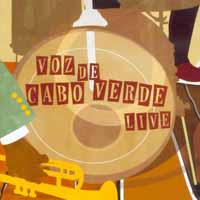
VOZ DE CABO VERDE
LIVE (Lusafrica 362902)
Young Doctor Chris called me up late one night, all excited. I figured he was test-driving some advanced medical experiment on his central nervous system as it must have been 3 a.m. where he was. He wanted me to hear something and propped the phone up to a speaker. This is something I hate: you can't hear the music very well and yelling "Okay, enough already!" doesn't help because the person on the other end has put the phone down to go to the bathroom or get another beer or whatever while you enjoy the music. Just like being on hold to a software company! So after a while he comes back on, breathlessly asking me what I think. It's "Bruca Manigua" by Arsenio Rodriguez played by Africans, I tell him. Yes, right on! but what do you think? Hard to say, it was scratchy but had energy. It is Senegalese? I ask. No, Cabo Verdean. It's this great old album called Voz de Cabo Verde, he tells me, something he picked up on his last trip to Africa. So I was pleased to get the new Voz de Cabo Verde album, it seemed like synchronicity. They have followed in the footsteps of some of their illustrious neighbours, Baobab, Bembeya Jazz and Rail Band, and reformed to have one more swirl around the dancefloor under the glitterball. It's just a little weary. The horns are consistently off, but the vocalists have their moments of sprightliness. Their chops haven't improved with age, but the audience is eating it up, and there's a big room boom to the recording which is fun but it seems like a sleepy 50s kind of night rather than something in the modern world. If you like Cabo Verdean music you will want this and you should check it out anyway.
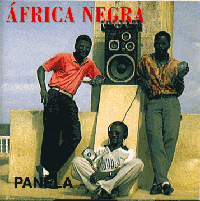
AFRICA NEGRA
PANELA (Sonovox 11 340-21995)
If, like me, you'll buy a CD for one outstanding track you may have LuakaBop's TELLING STORIES TO THE SEA because of the presence of Africa Negra and their song about being bitten by a dog. There is another Lusophone compilation called INDEPENDENCIA that has another track by this band, "Alice," and a third cut appears on PALOP AFRICA! Another instance of "must have the CD for that one song." With some effort, you can get their albums from a Portuguese distributor, Bem Vindo (their website is not always working). Africa Negra have half a dozen CDs out (ANINHA, CARAMBOLA, LOJOMATO) recorded in Lisbon. João Seria is the leader and chief singer and the band's career seems to have thrived in the 1970s and 80s. Their songs are hits from Angola to Coimbra. Their groove is uniquely theirs, but the queasy organ and mechanical-sounding drums remind me of Sweet Micky, the one-man band from Haiti. Folks either love this or hate it. The title cut to PANELA sounds harsh because of a brittle organ settling, and the guitars on my favourite track, "Mulatta," seem atonal because the effects pedals are turned up. Nevertheless, it is a distinctive sound and, to me, extremely catchy.
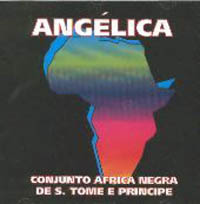
AFRICA NEGRA
ANGELICA (Sonovis Portugal)
This conjunto are from São Tome e Principe, islands in the Gulf of Guinea, and they are chief exponents of Santomense music. João Seria is the singer; the guitarist is influenced equally by soukous and highlife which makes for a tasty blend. Their music is also popular in Colombia, as a bit of Googling turns up a fan site there, with music samples. The bass and drums lean to the Antillean side, showing where zouk and Congolese rumba meet.
Formed in the late 70s, Africa Negra put out half a dozen albums, recorded in Lisbon, that are beloved in the Portuguese-speaking world. Each has something to recommend it. ANGELICA includes the song about the dog biting you, and the title track and opener, "São Tome," are equally as good. "Cimoda" is an attempt at funk, but more Nigerian funk than American, I'd venture. Their music seems to suspend time, in a danceable groove. The trance is woven by guitar lines treated through flanger and echo as the bass and drums keep up a distinctive 144-bpm bomp (not on all the tracks). If you love Sam Mangwana's African All Stars from the 80s, Eddy Gustav's production work, or Ryco Jazz, you will want to track down these discs.
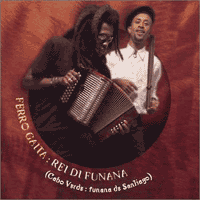
FERRO GAITA
REI DI FUNANA (Harmonia 02305-2 Melodie)
Ferro Gaita, the names of the two instruments used in Funana, is also the name of a roots band from Cabo Verde. Their new album REI DI FUNANA is a rocking, jam-kicking party to go. I have to admit I've never gone for the torpid Cesaria Evora sound much, so I'm glad to recommend something from Cabo Verde that has a lot of life to it. The closest thing I can think of is bachata from Dominican Republic. There's a relentless two-step thud to the bass and by the second cut a layering effect like dub hits the sound and things start to swirl giddily out of control. Track four has a repeat of the same rastafarian reverb effect, but this time it starts to loop like pygmy polyphony and creates a hypnotic outro. Intense, varied, and big fun: check it out.
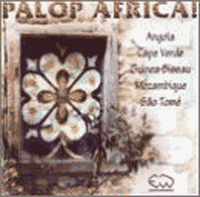
VARIOUS ARTISTS
PALOP AFRICA! (Earthworks STEW46CD)
I wasn't aware of the African music connection when I visited Portugal a decade ago. The Brazilian influence was everywhere and in an odd reversal of countries which are full of peoples from their former colonies, the goal of everyone I met in Portugal was to get out and move to Brazil. Everything stopped at 7 p.m. when the Brazilian soap operas came on television. While I did know about Portugal's colonial past I was ignorant of the African music scene in Lisbon that revolves around musicians from the five former African colonies in Africa (that were established over 500 years ago). This release from Stern's/Earthworks documents this scene: PALOP AFRICA! features bands that originated in Guinea-Bissau, Angola, Cape Verde, São Tome, and Mozambique. Among them is Africa Negra, a personal favourite as their music makes a nice conjunction somewhere between soukous and Nigerian highlife with a warbly flanged rhythm guitar. They appeared on two previous compilations: 1975-95 INDEPENDENCIA and AFROPEA 3: TELLING STORIES TO THE SEA, and have a new release on the Sons D'Afrique label called QUE COLO DE ANZU. All this despite the fact that it's virtually impossible to get guitar strings on the island of São Tome. The Angolans have a musical style called Semba which is akin to Brazilian Samba, and there's a fine example of it here from Paulo Flores, one of that country's biggest stars. There's a strong South African influence on the music of G. Mario Ntimana, the self-styled King of Marrabenta. Don Kikas from Angola has worked with zouk musicians in Paris and is the hottest thing in Kizomba as that French Caribbean sound has caught on there big time. In addition to the Brazilian influence you can smell the salt air of the sea shanties underlining the accordion (gaita) parts to "Cabra Preta" by Sema Lopi. They are a rootsy funana band using a ferro (metal rod) as percussion and add a balance to the slicker sounds of this compelling compilation.
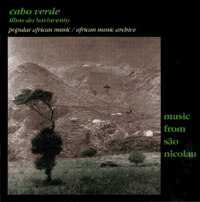
VARIOUS ARTISTS
MUSIC FROM SAO NICOLAU (Popular African Music)
The latest Cabo Verdean sound is a twenty-year-old recording, MUSIC FROM SAO NICOLAU put out by Popular African Music in conjunction with the University of Mainz Institute for African Studies. São Nicolau is one of the minor islands in the Cabo Verdean archipelago and remains relatively isolated from the rest of Africa. The music there thrives in its own world without too much outside influence but still, in the two decades since this album was recorded, zouk, rock and reggae have overtaken the youth and many of the older forms documented here are no longer being played. The cavaquinho player of the Da Cruz ensemble is already working some reggae chops behind the gypsy-like violin on track 16, "Regui." The music is very lyrical with mellow acoustic guitar duos and trios. The songs are mostly slow and tend to be mournful. There is a version of "Sodade (Nostalgia)" that will be familiar to fans of Cesaria Evora that combines samba and coladeira. Larger ensembles add violin and cavaquinho. One carnaval march, "Estrela Azul" ([wherever you go you're sure to find a] Blue Star) could be right out of the streets of Rio. There are two poignant songs of a young laundress, accompanied by her washboard; a nightwatchman who improvises verses with his strangely tuned 10-string guitar that put me in mind of Barbecue Bob for a moment. The CD ends with three short yells to scare away birds from the grain fields.
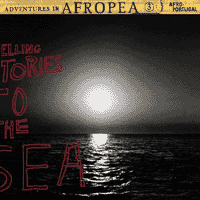
VARIOUS ARTISTS
TELLING STORIES TO THE SEA (Warner Bros/Luaka Bop 45669-2 1995)
After a couple of successful sorties to Brazil, David Byrne and his lackeys have now ransacked the archives of Lusophone music from Africa to produce Adventures in Afropea 3: Afro-Portugal. The scattered cultures of Africa that share Portuguese as a language include Angola and the dozen tiny islands of São Tomé, Principé and Cape Verde, from whence come the sultry song-stylings of the immensely popular Césaria Evora. Evora is represented in two great tracks including the acoustic "Sodade" which calls to mind Brasilian samba. But the unknown artists here are equally impressive. Tulipa Negra provides an anthemic speedy merengue; "Vizinha ka bale (My neighbour's no good)" by Jacinta Sanches has all the raw energy of early Zouk; and a song about being bitten by a dog by Africa Negra from São Tomé adding a wonderfully wobbly tremelo guitar solo that unleashes the endorphin rush of an all-night dance party.
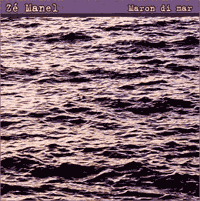
ZÈ MANEL
MARRON DI MAR (Cobiana)
Zè Manel is a singer from Guinea-Bissau, formerly with Super Mama Djombo. MARRON DI MAR is his polyglot CD on the Cobiana label, recorded in Oakland, California. He starts out with a plea in English for unity, "Afrika Unite," which is rather laid-back for the urgency of the message. His delivery is reminiscent of Bob Marley, though the music is more Monty Alexander piano-bar jazz than Wailing Wailers. But this is a mellow album: it doesn't strike out into new territory but the familiarity is pleasant. If you buy albums for one or two good tracks, this has a couple of really nice songs on it: "Na kaminho di luta" ("On the path of struggle" in Portuguese patois) has a superb acoustic guitar by Samba N'go and moody sax backing by Norbert Stachel.